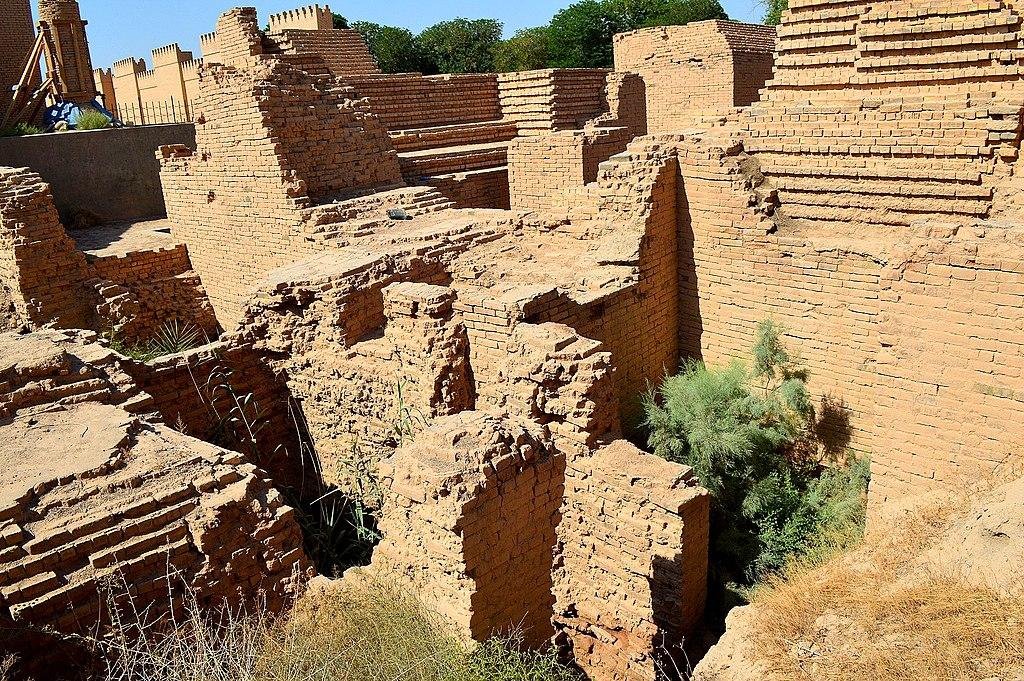A recent study, led by researchers from University College London (UCL) and Wichita State University, unveils fascinating revelations about a peculiar strengthening of Earth’s magnetic field over 3,000 years ago.
This enigma, known as the Levantine Iron Age geomagnetic Anomaly, has intrigued scientists. Published in the Proceedings of the National Academy of Sciences, the research utilized archaeomagnetic techniques to uncover the details of this enigmatic phenomenon.
 This brick dates to the reign of Nebuchadnezzar II (ca. 604 to 562 BCE). Magnetized grains shaved off it reveal the strength of the magnetic field. Credit: Slemani Museum
This brick dates to the reign of Nebuchadnezzar II (ca. 604 to 562 BCE). Magnetized grains shaved off it reveal the strength of the magnetic field. Credit: Slemani Museum
The Earth’s magnetic field, essential for protecting the planet from space radiation and guiding navigation systems, is known to fluctuate over time. The study, led by Professor Mark Altaweel of University College London, aimed to unravel the complexities of this magnetic anomaly, which left traces from China to the Atlantic Ocean, with a more pronounced impact closer to modern-day Iraq.
The researchers examined 32 Mesopotamian clay bricks, each inscribed with the name of a king, and containing iron oxide grains preserving the magnetic field’s strength and direction when fired. This innovative approach, termed “archaeomagnetism,” provided a unique opportunity to create a high-resolution historical map of Earth’s magnetic field changes.
Professor Altaweel emphasized the significance of the bricks, stating, “We often depend on dating methods such as radiocarbon dates to get a sense of chronology in ancient Mesopotamia. However, some of the most common cultural remains, such as bricks and ceramics, cannot typically be easily dated because they don’t contain organic material.”
The results confirmed that during the Levantine Iron Age geomagnetic Anomaly, the Earth’s magnetic field was more than one and a half times stronger than today. Notably, the study pinpointed a dramatic shift in magnetic field strength during the reign of Nebuchadnezzar II from 604 to 562 BCE, suggesting rapid spikes in intensity.
Co-author Professor Lisa Tauxe of the Scripps Insтιтution of Oceanography said: “The geomagnetic field is one of the most enigmatic phenomena in earth sciences.”
The research not only contributed to understanding Earth’s ancient magnetic anomalies but also offered valuable tools for dating artifacts with unprecedented precision. By correlating the magnetic signatures with the reigns of specific kings, the team supported the Low Chronology proposed by historians, resolving debates about the sequence’s start and end dates.
 Ruins of the ancient city of Babylon, reign of Nebuchadnezzar II, 6th century BCE, in modern-day Iraq. Credit: Osama Shukir Muhammed Amin, Wikimedia Commons
Ruins of the ancient city of Babylon, reign of Nebuchadnezzar II, 6th century BCE, in modern-day Iraq. Credit: Osama Shukir Muhammed Amin, Wikimedia Commons
Lead author Professor Matthew Howland highlighted the broader implications, stating, “By comparing ancient artifacts to what we know about ancient conditions of the magnetic field, we can estimate the dates of any artifacts that were heated up in ancient times.”
Beyond its archaeological significance, the study provided information about ongoing anomalies like the South Atlantic Anomaly (SAA), believed to be millions of years old. Drawing parallels, scientists have tracked changes in the SAA’s strength 800-500 years ago by measuring ash from burned huts in the area.
More information: Howland, M. D., Tauxe, L., Gordin, S., Altaweel, M., Cych, B., & Ben-Yosef, E. (2023). Exploring geomagnetic variations in ancient mesopotamia: Archaeomagnetic study of inscribed bricks from the 3rd–1st millennia BCE. Proceedings of the National Academy of Sciences, 120(52). doi:10.1073/pnas.2313361120





